Women & Golf reader Alison goes through a putter fitting with The Golf Tailor.
*Spoiler - it's more than just hitting a few putts*
As the saying goes “Drive for show, putt for dough” – it’s one that we all know but probably one that we don’t always pay that much attention to. I would guess that many of you would be more likely to part with money for a new driver than a new putter. Even if you were in the market for a new putter would the process be anything more than trying a couple from the pro shop and deciding which one you like the look and feel of more?
With all the technology we have now in golf, it has become a lot easier to make sure that when you purchase new clubs, you can be fitted specifically for your swing. You don’t need to be a data geek to understand the numbers when you’re trying out new clubs.
But, would you ever think to get yourself fitted for a putter and even if you did, would you know where to get fitted?
Step in The Golf Tailor, Jasper Miners, a certified master Edel fitter. He invited Women & Golf and one of our members Alison, who has a handicap index of 6.0, to Brocket Hall (Jasper also works at The Pro Shot Golf Club in Milton Keynes) to show us why being properly fitted for a putter is essential if we want to take our game to the next level.
The Edel putter fitting process
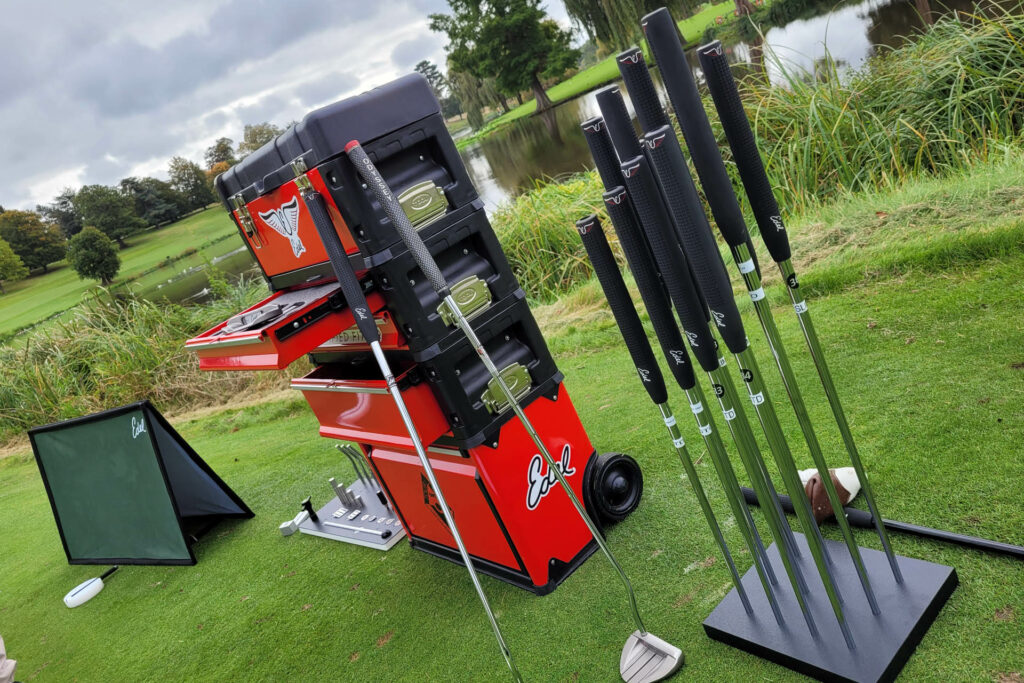
Stage One - BioSwing Dynamics Body Scan
Before you even have a putter in your hand, it’s important to get a few vital statistics. Like with a full golf swing, the putting stroke can differ between players. Have you ever wondered why that may be? Well, one of the main reasons is to do with biomechanics, for example, our arm length differential.
This is the measurement from our middle knuckle to our elbow and from our elbow to our humeral head (shoulder). These measurements allow the fitter to work out your slot, and can give an indication of lie angle or slot. These are also contributors to the way we move the putter through time and space.
The slot is a plane through which the putter and your arms work during your stroke. Here are some professional examples:
- Jack Nicklaus has a longer lower arm to his upper and has a shoulder slot
- Tiger Woods has equal length lower and upper arms and has a torso slot
- Sergio Garcia has a shorter lower arm to his upper and has a hip slot
But it’s not just about arm length differential, your height and arm span can also impact your stroke.
Simply, if your arm span is greater than your height, you’re inclined to stand more vertical and use your arms as a source of power and if your arm span is shorter than your height, you’ll have a propensity of using your torso as a source of power. These factors can impact arc, path, ball position and consistency.”
The final part of this stage was to establish Alison’s right arm fold, or the way her elbow works in her backswing. This has a massive impact on hand position (or grip) and can determine which putter grip may be best suited. Arm hang, or allowing your arms to hang naturally in a putting position, also gave an indication of how she was most likely to grip the putter. Believe it or not, we don’t all do the same thing.
Weight shift, or posting, is also assessed in addition to a detailed interview of our perception of putting – from green reading, eye dominance, current equipment setup, to whether Alison uses a line on the ball or not. This is amongst a plethora of other seemingly innocuous details that Jasper notes.
Stage Two – Fitting for Aim
Next, it was time to analyse Alison’s aim using her putter as a benchmark. The set up for this involved a screen with a laser marker placed in front of it. The final part was attaching a small mirror to Alison’s own putter.
Alison was then asked to set up to putt towards the laser marker, as if that were the hole. Once Alison was happy with her set up, Jasper took away the ball and it was then possible to see exactly the alignment of the putter.
Ideally, you are looking for the green laser dot to be no more than a few inches above the “hole”.
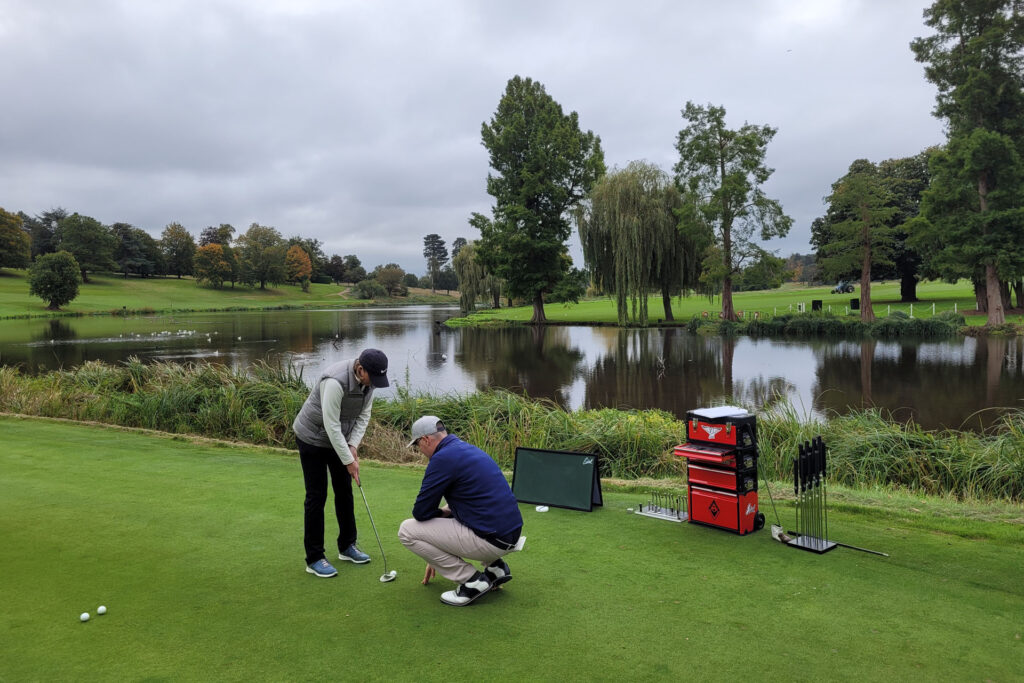
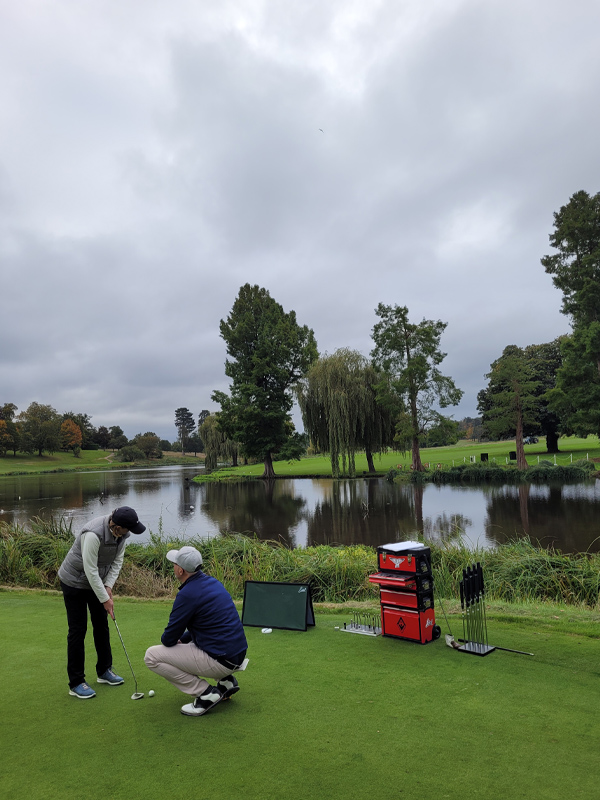

As I observe, it’s as if I am watching a magician or maybe even Derren Brown in action. Jasper has such an intricate knowledge of the putting stroke that he is able to tell Alison in a lot of detail where her weaknesses lie in her putting. This is seriously impressive given she hasn’t hit a putt yet.
Why is aim analysis important? Well, from Jasper’s point of view it helps him to make sure he has right putter length, lie and loft, head shape, grip, hosel type and alignment aids. All of these factors contribute towards a putter that Alison can aim instinctively at her chosen target intuitively.
Taking the biomechanic data and the aim analysis, Jasper is able to build an Edel putter from component parts that he feels will best suit Alison. Feedback from the laser confirms that the setup is comfortable and she can aim it at address consistently without any conscious effort. There is room for negotiation at this stage because Alison would prefer a putter with a mallet head.
After some more aim analysis and a few tweaks it’s onto the final stage.
Stage Three – Fitting for Feel
We’re now forty-five minutes into the fitting and Alison is yet to hit a putt! It almost seems ridiculous but as an observer, it has been a fascinating experience to see how much detail Jasper goes into.
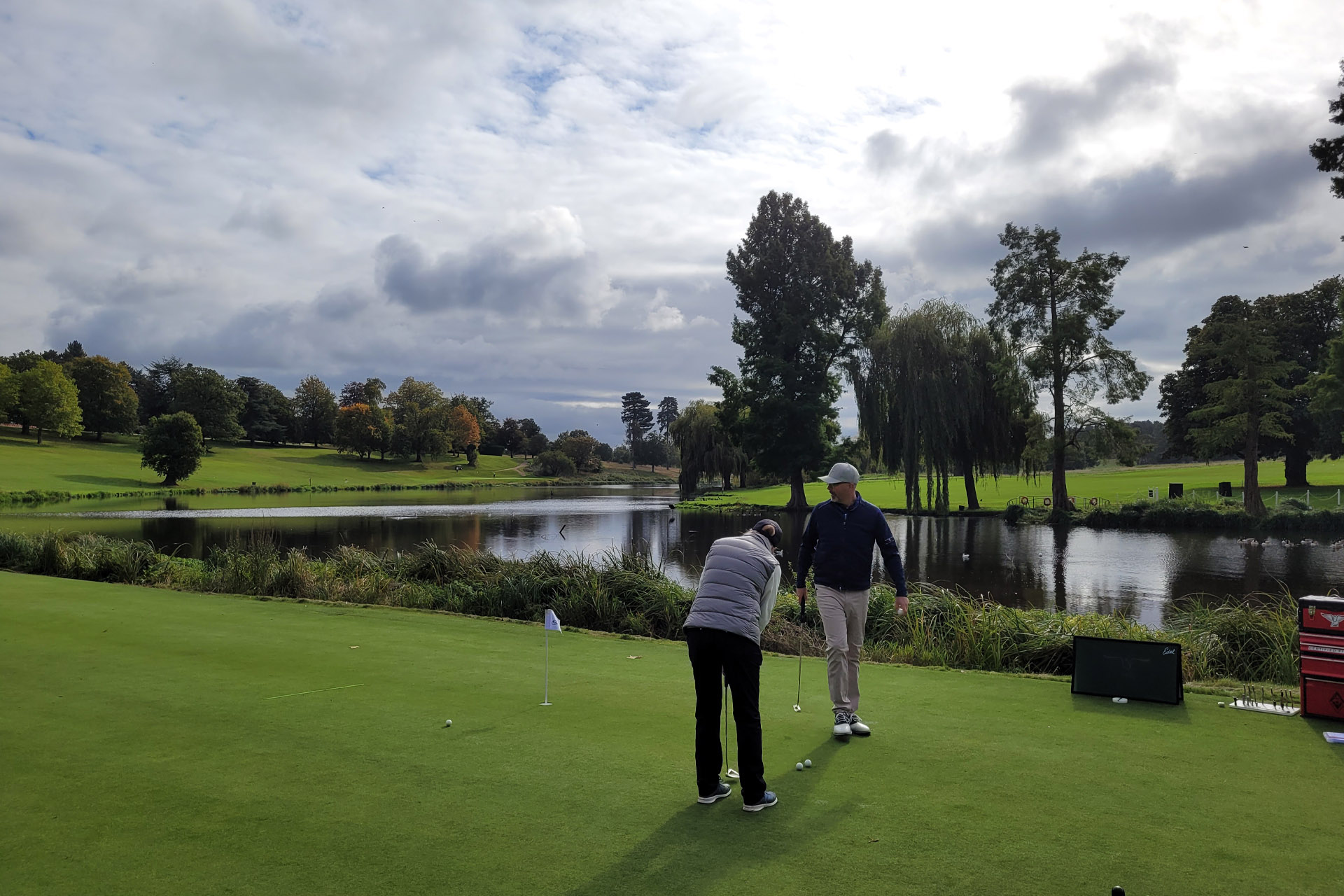

Rather than hitting to a hole, Alison is asked to hit towards a string line on the green which is laid out after she takes five paces. The aim is to get it exactly on the marker. Using Alison’s stride as a benchmark allows her to recalibrate her distance control during practice and is a strategy that can be taken directly from the practice green to the course. “We want to fit, practice, train and play the same way”, says Jasper.
There are two broad types of putting stroke, radial and linear. The majority of golfers use a linear stroke but there are three types – short, medium and long. These stroke types tend to inform the weighting and balance of the putter.
By observing Alison’s stroke and the result of the putts, Jasper is able to see what type of linear stroke she has. This informs him of the options to add head weight, counterweight into the butt of the club and/or internal shaft weighting above or below her hands.
This video from David Edel explains in more detail about the different types of linear stroke and why and where the weighting needs to be:
Jasper works through several variations, always observing the stroke and putts produced each time. No putt is hit twice with the same weighting until the ideal results are achieved. This allows Alison to obtain an instinctive fit rather than her becoming fit to her putter. From that point, micro adjustments are made to dial in the weight and balance of the putter.
Putter Fitting - the end result
After two hours, Alison has an Edel putter which is perfectly set up for her and her putting stroke. On the surface, the two putters may not look that different but looks can be deceiving.
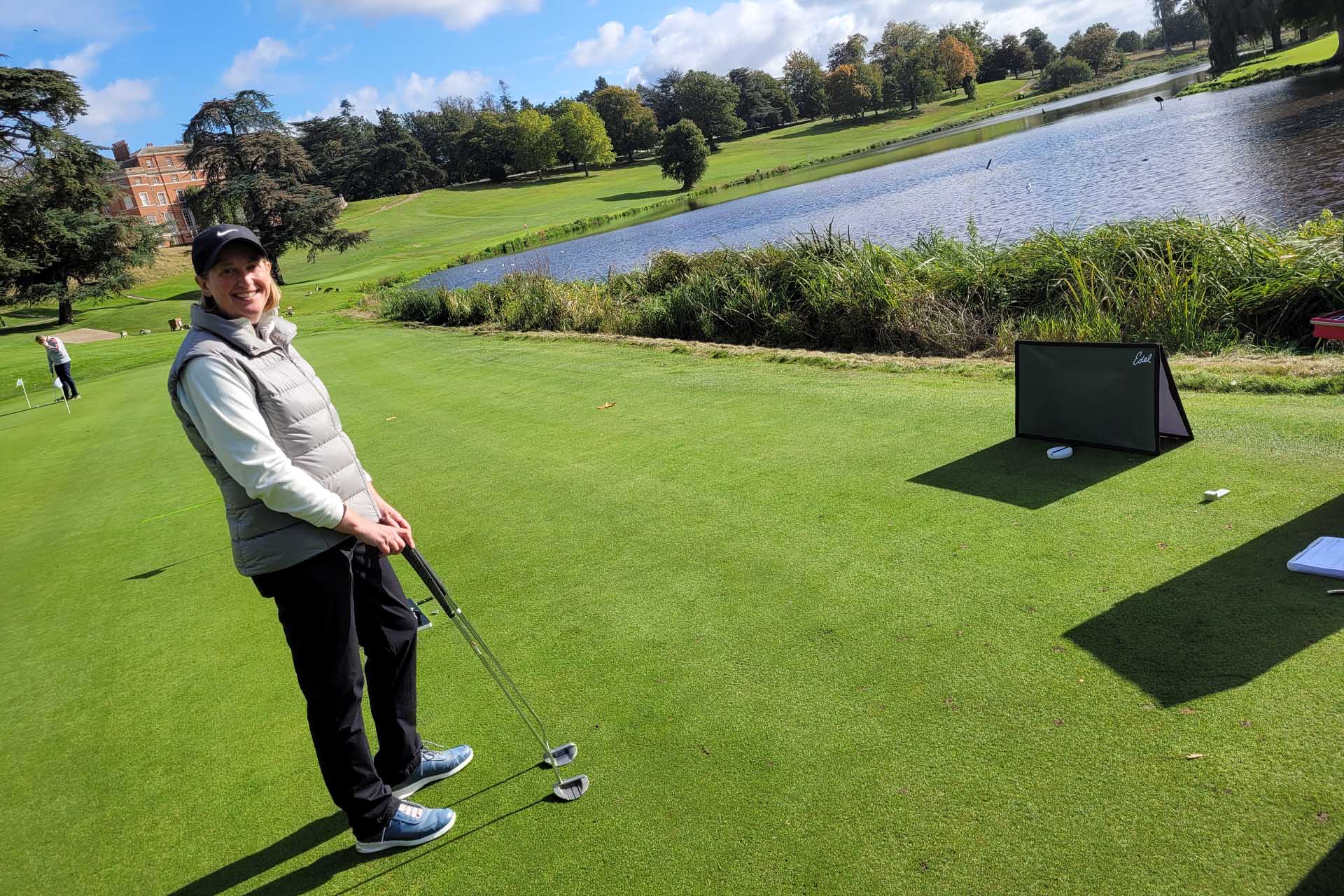

Here's what Alison thought of the whole putter fitting process with Jasper:
"I’ve never done a putter fitting before so wasn’t sure what to expect but I was really impressed with how detailed this session was. The part at the beginning on biomechanics was particularly interesting, just seeing how your body measurements and the way your arms hang can influence your putter set up.
"When we moved on to testing aim using the laser I found that my current putter shape means that I tend to aim to the right of the hole. By changing the custom putter set up I could immediately see how my aim improved. There were so many customisable elements which you get to try and you gradually find a set up that best suits you and your stroke.
"I definitely bought into the science behind this fitting and was impressed with the results. I think that the fitting fee was worth it for the service that you get but when you add that to the cost of the putter it is a very expensive choice.
"For me personally the potential benefits of this putter are outweighed by the costs so I will be sticking with my off-the-shelf putter for the foreseeable future but I did really enjoy the experience."
How much does a putter fitting cost?
A putter fitting with Jasper, The Golf Tailor, is £75. All Edel putters are priced the same regardless of set up and cost £495 regardless of the amount of customisation required to make it truly yours.
This is clearly not your off-the-shelf putter and is a serious amount of investment but the result on the greens after putting one of these in your bag, will be worth it and you would justify keeping it for life.
WIN a FREE putter fitting with The Golf Tailor
The Golf Tailor is currently offering you the chance to WIN a FREE putter fitting at The Pro Shot Golf Club in Milton Keynes - enter the prize draw by visiting - The Golf Tailor - and entering your details.
If you’re interested in booking a fitting with The Golf Tailor then visit the website here.
Discover Courses ‘Better By Design’ – Evalu18.com - find out more.















